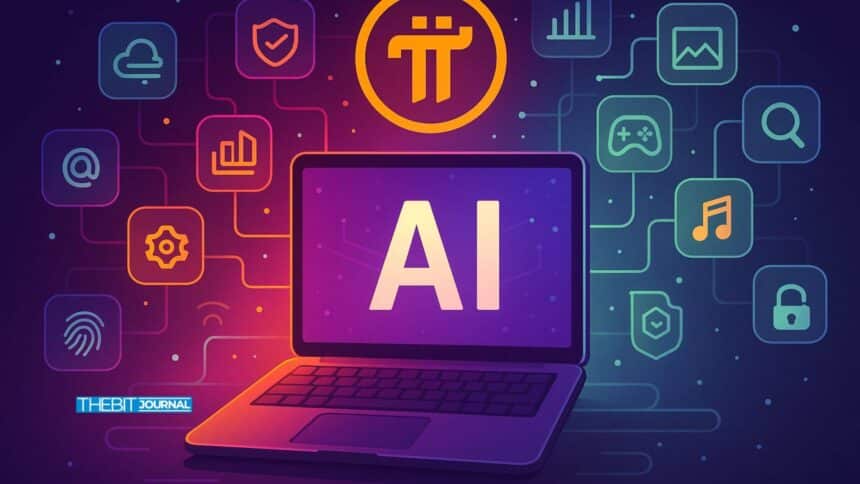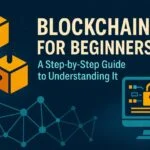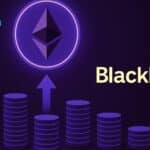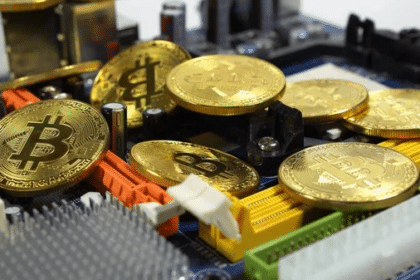Pi Network’s AI-enabled App Studio has propelled the mobile-mining project to 9 120 application prototypes in less than two weeks, with 30 already live on mainnet. The surge demonstrates how no-code tooling can transform an enormous user base into a developer army, setting the stage for one of the fastest dApp ecosystem roll-outs in recent Web3 history.
From Pioneer Experiment to Web3 Contender
Conceived in 2019 as a low-energy, smartphone-based mining experiment, Pi Network spent its early years building a 47-million-strong community while delaying open-mainnet launch. Each annual “Pi2Day” (28 June) update added more infrastructure, but this year’s edition was pivotal: the Core Team unveiled App Studio, a staking-based ranking system, and easier wallet activation, shifting the focus from passive accumulation to active utility.
How the AI App Studio Works
The studio lets non-technical “Pioneers” describe an idea in natural language. A generative AI engine then produces front-end screens, smart-contract code, and Pi SDK hooks in minutes. Fees are zero, and templates cover marketplaces, DeFi swaps, and chatbots. More than 7 900 projects were drafted in the first seven days, including “Ayai,” an AI tutor, and “PiMarket,” a peer-to-peer goods hub.
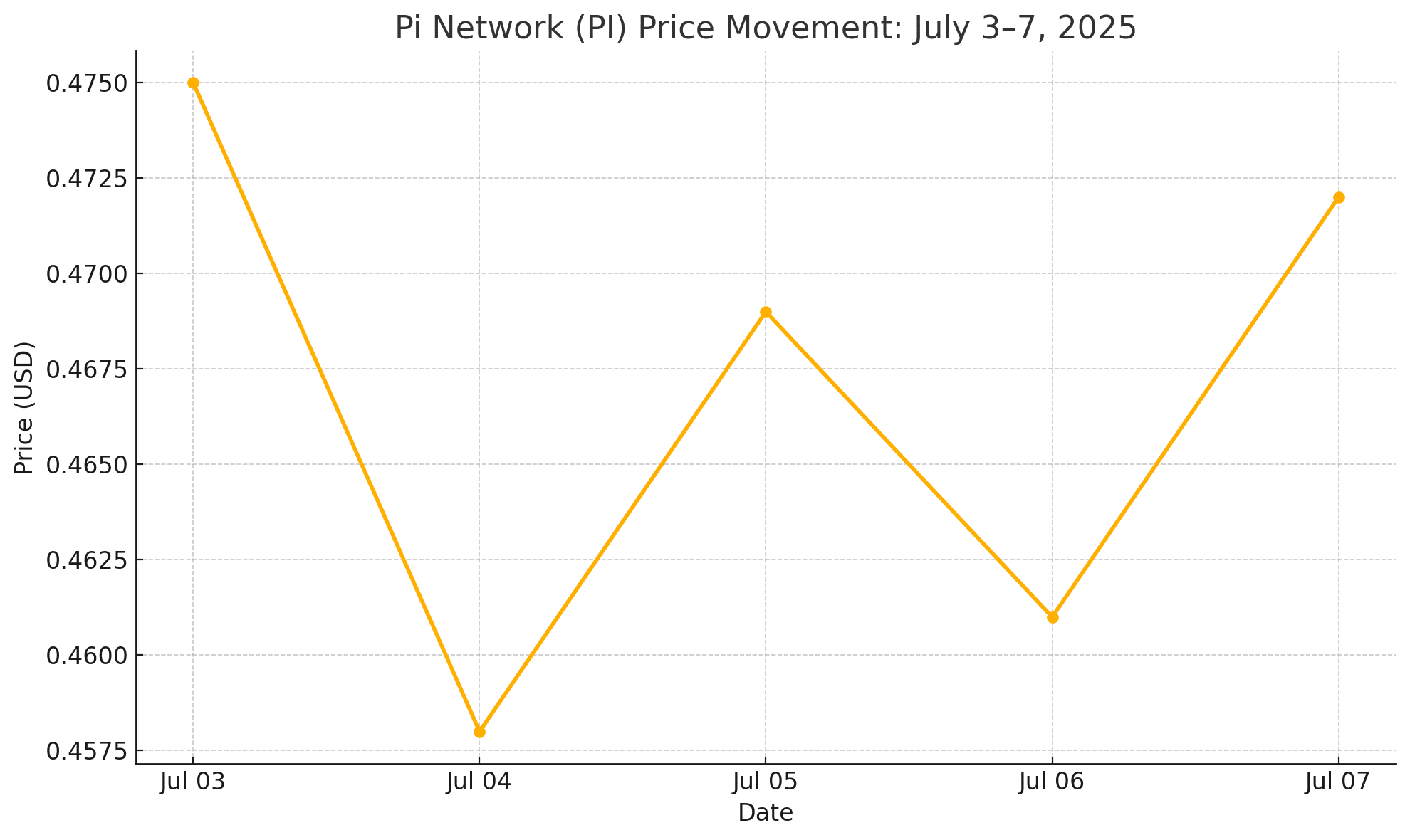
Pi Network Price and Recent Volatility
Utility speculation has nudged the off-exchange IOU token. Pi traded as high as 0.49 USD on 6 July before settling near 0.47 USD on 7 July. Analysts warn that without official exchange listings and circulating supply data, price remains highly sentiment-driven
| Date (2025) | Closing Price (USD) | 24 h Change |
|---|---|---|
| Jul 07 | 0.472 | +2.5 % |
| Jul 06 | 0.461 | −1.7 % |
| Jul 05 | 0.469 | +0.8 % |
| Jul 04 | 0.458 | −3.2 % |
| Jul 03 | 0.475 | +1.1 % |
Community Reactions and Expert Voices
“Over ten thousand citizen-built applications is an adoption curve few chains achieve in year one, let alone pre-open-mainnet.” – Dr Karen Luo, blockchain researcher, University of Hong Kong.
Crypto strategist Daniel “Dr Altcoin” Lee cautions that an 8 430-app submission limit noted in test documentation could bottleneck long-tail innovation unless lifted soon. The Core Team has not commented publicly on quota changes. x.com
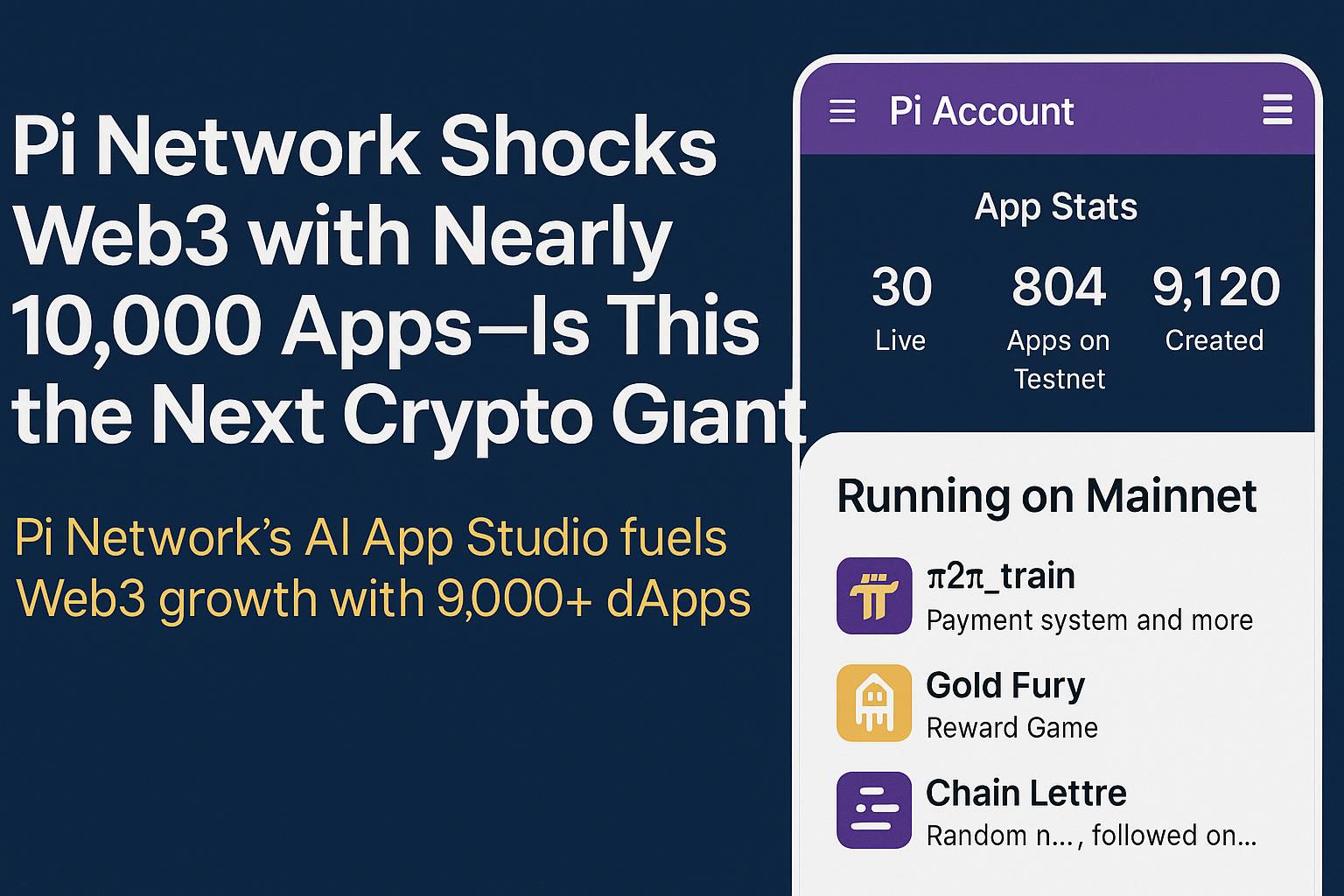
Why Traders Should Watch Pi Network Now
The explosive growth of Pi Network’s App Studio isn’t just a developer story, it’s a trader’s signal. With over 9,000 applications launched in under two weeks and live mainnet activity climbing daily, Pi is rapidly transitioning from speculation to utility. This kind of organic expansion often precedes breakout moves in price action, especially when tied to real user adoption.
For traders, the shift from concept to use case means that Pi is no longer just a waiting game, it’s becoming an ecosystem. As more dApps go live and transactional volume builds, token demand could follow. This makes Pi a project worth tracking closely for early positioning before broader exchange support materializes.
Conclusion
The dash toward 10,000 applications marks Pi Network’s transition from a passive mining project to a potential Web3 utility hub. Sustained momentum will hinge on lifting current submission ceilings, migrating more prototypes to mainnet, and securing transparent tokenomics. If those pieces fall into place, the App Studio milestone could be remembered as the inflection point that turned a phone-mining experiment into a self-propelling ecosystem.
Frequently Asked Questions
What is Pi App Studio
An AI-powered no-code tool that lets community members generate fully functional dApps on Pi Network through simple language prompts.
How many Pi apps are live on mainnet
Thirty apps run on mainnet, while 9 090 more are in various test stages inside Pi Browser as of 7 July 2025.
Does the growing app count affect Pi price
Greater utility can support price, but the token remains an IOU on most trackers and lacks official circulating-supply data, so volatility is high.
Glossary of Key Terms
App Studio: An AI-first builder that produces Pi dApps without coding.
Mainnet: The live blockchain where finalized Pi transactions occur.
Pi2Day: Annual 28 June event for major Pi Network announcements.
No-Code Platform: Software enabling app creation via visual or language interfaces rather than traditional programming.
IOU Token: A pre-launch tradable placeholder representing future on-chain coins, typically on centralized exchanges.



